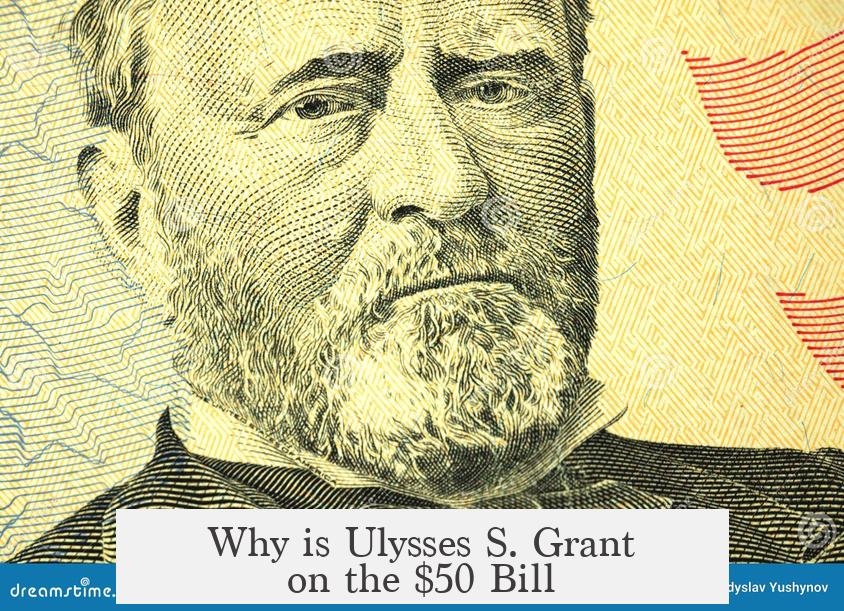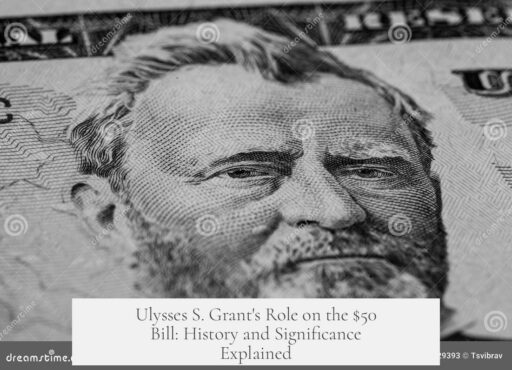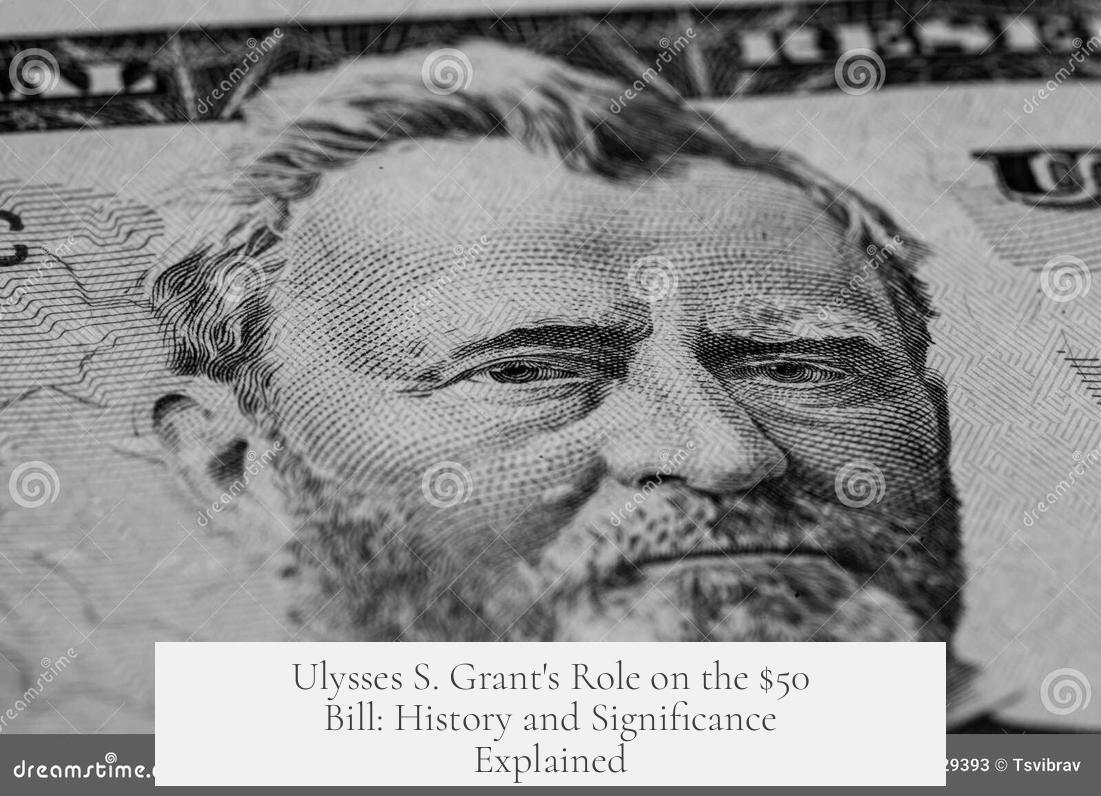Ulysses S. Grant appears on the $50 bill because he was part of the portrait rotation used on U.S. currency before 1928, and his image was retained when currency designs were standardized and fixed in that year.
Before 1928, U.S. currency regularly featured different portraits, reflecting frequent changes across many note types such as Silver Certificates, Gold Certificates, and Treasury Notes. These changes occurred often, with several individuals appearing briefly on various denominations. For example, William Fessenden appeared on a $20 bill in 1882, and Civil War General Philip Sheridan appeared on a $10 and $5 bill in the late 19th century. This period showed great diversity in individuals honored on currency.
Grant qualified for currency recognition due to his significant roles as a Civil War general and U.S. president. His portrait surfaced on several denominations over time, including the $5 bill in 1886 and 1896, a $10 bill in 1899, and eventually the $50 bill first in 1913. Thus, Grant was one among a broad group of historical figures whose images circulated on U.S. currency during this era.
In 1928, the U.S. Treasury introduced a new series of notes with standardized size and style. This series consolidated portraits, establishing a consistent set of images on the different denominations: George Washington on the $1, Thomas Jefferson on the $2, Abraham Lincoln on the $5, and Ulysses S. Grant on the $50. This marked the end of frequent portrait changes. The portraits chosen in 1928 were not necessarily special but were simply those featured in the rotation at that time.
Because Grant’s portrait was already on the $50 bill when this standardization occurred, his image was “grandfathered” in. Since 1928, his portrait has remained fixed on the $50 bill without change. His presence reflects both his historical significance and the practical circumstance of design consolidation in the early 20th century.
- Portraits on U.S. bills frequently changed before 1928.
- Grant’s roles as general and president made him eligible to appear on currency.
- He appeared on various bills before 1928, including the $50 starting in 1913.
- The 1928 series standardized currency portraits, introducing fixed images for each denomination.
- Grant was kept on the $50 bill due to his existing placement when the rotation ended.
Why is Ulysses S. Grant on the $50 Bill?

Ulysses S. Grant is on the $50 bill primarily because he was already part of the rotating cast of historical figures featured on U.S. currency when the government decided to lock in the portraits in 1928. Simply put, Grant earned his spot early, as a prominent Civil War general and former president, and then remained there when the portrait lineup became permanent.
Sounds simple enough, right? But like any good story, there’s more beneath the surface.
The Wild West (of Portraits) Before 1928
Before 1928, the U.S. dollar was a bit of a shape-shifter. Portraits on bills changed like fashions in a runway show—some lasting only a year. It was a chaotic yet fascinating era.
You could find all sorts of individuals on currency, from former Treasury Secretary William Fessenden to Civil War generals like Phillip Sheridan. Even Martha Washington made an appearance, making her the first woman on U.S. currency.
Imagine spotting explorer Merriweather Lewis or inventor Robert Fulton while making change. The variety reflected America’s colorful past. It was a time when different types of notes—Silver Certificates, Gold Certificates, Treasury Notes—each sported distinct portraits, adding to the kaleidoscope of faces.
Grant: The Man Who Qualified for the Spotlight
Why Grant? The answer starts with his credentials. First, he was one of the Union’s greatest generals, leading the North to victory in the Civil War. Then, he served two terms as U.S. president. Those are the kind of highs that demand recognition on paper currency.
Grant first hit the bill stage on the $5 in 1886, made repeat appearances in 1896, and even showed up on a $10 in 1899. His debut on the $50 came in 1913—a denomination befitting a man of his stature.
He wasn’t the only one making cameo appearances, but his dual legacy as general and president made him a solid choice.
1928: When Portrait Changes Got a Timeout

By 1928, the U.S. treasury got tired of the dizzying dance of portrait changes. They standardized the size, style, and portraits on notes to bring order to the chaos.
This was the birth of the “familiar faces” we know today: George Washington on the $1 bill, Thomas Jefferson on the $2, Abraham Lincoln on the $5.
Grant was firmly established on the $50 bill at this point. From then on, the portraits stopped changing altogether—no more swaps or surprise guest stars.
Why Did Grant Stay on the $50?
Here’s the kicker: Grant’s portrait stuck on the $50 bill simply because he was there when the freeze button was pressed. The portraits selected in 1928 weren’t chosen because of a secret vote or grand ceremony but because they were the ones already in rotation at that moment.
Think of it like musical chairs. When the music stopped, Grant was sitting on the $50 seat—so he stayed put, grandfathered in by inertia and timing.
Does This Mean Grant’s There Forever?
At this point, yes. Redesigning U.S. currency portraits is not just about swapping faces; it’s a political and logistical dance. Grant’s image has become iconic, symbolizing both his military leadership and presidential legacy. Changing that now would require deliberate action from Congress and the Treasury, which shows no sign of happening soon.
What Does This Tell Us About American Currency?

The story of Grant on the $50 bill reveals that sometimes, history isn’t about grand decisions but about timing and practical choices made in bureaucracy.
It also reminds us how currency design reflects shifting cultural values and historical recognition. While some figures faded off bills, Grant’s portrait endured, locked in place by a mix of his fame and the standardization process.
Practical Tips If You’re Curious About Currency and History
- Next time you hold a $50 bill, take a moment to appreciate the layers of history behind the face staring back.
- Collecting older notes can reveal the variety of portraits that once circulated. It’s like a history lesson you can carry in your wallet.
- If you want to propose new faces, get ready for a long campaign. Currency design is complex and steeped in tradition.
Wrapping It Up
So why is Ulysses S. Grant on the $50 bill? Because he was already comfortably seated there when the U.S. government hit the pause button on changing currency portraits in 1928. His distinguished service as a general and president made him a natural choice, and the standardization locked in his place for generations to come. No secret votes or dramatic contests—just good timing and lasting legacy.
Who knew the $50 bill held such an unglamorous yet fascinating story of chance and change frozen in time?
Why is Ulysses S. Grant featured on the $50 bill?
Grant appeared on the $50 bill because he was part of the group whose portraits were in rotation before 1928. When the Treasury standardized currency, his image was kept, making him a permanent feature.
Was Grant on other currency denominations before the $50 bill?
Yes, Grant appeared on $5 notes in 1886 and 1896, and on a $10 in 1899, before first appearing on the $50 in 1913.
Did the portraits on U.S. currency often change before 1928?
Yes, portraits changed frequently with many different notes and certificates carrying various images, including less well-known historical figures, before standardization.
Were the portraits chosen in 1928 special or chosen for a reason?
No. The 1928 series simply fixed the portraits that were currently in use, ending the rotation, which is why Grant stayed on the $50 bill.
What qualified Grant to be on U.S. currency?
Grant’s roles as a Civil War general and as a U.S. president made him a fitting candidate for portraits on notes during the late 19th and early 20th centuries.




